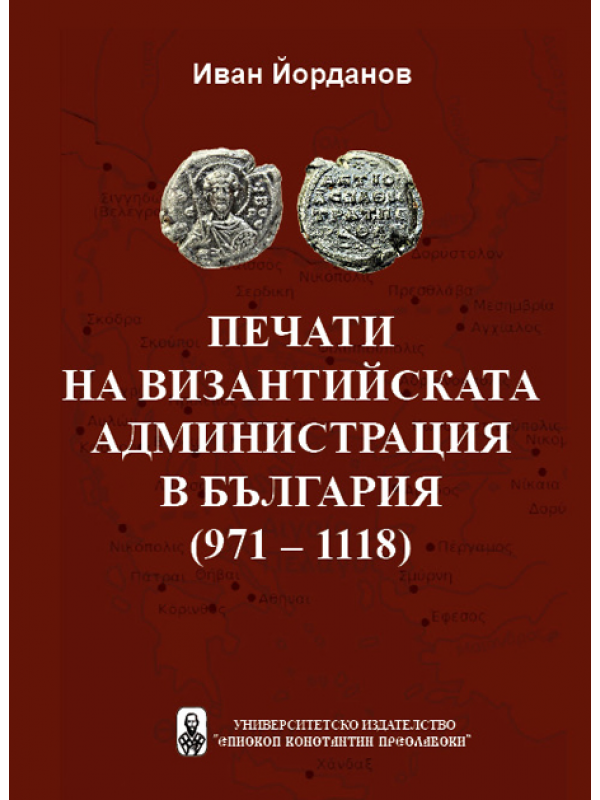Shopping Cart
0 item(s) - 0.00лв
Seals of the Byzantine administration in Bulgaria (971–1118)
Seals of the Byzantine administration in Bulgaria (971—1118)
Language: Bulgarian with a summary in English. Category: Sigillography
For four decades I have been searching for, documenting and publishing Byzantine seals from the territory or present-day Bulgaria. In 2009 I published a three-volume corpus of Byzantine seals which includes more than 3500 seals, 500 plombs, 10 molds for casting plombs and two bullotyrions. The aim of this publication is to use them as sources for our land’s history. The Byzantine administration in the Bulgarian lands is one of the priority topics, at least because 2/3 of the seals found in Bulgaria (2547 specimens) refer to this period and the seals themselves are part of this administration.
In this study another collection was formed belonging to the Byzantine administration in the Bulgarian lands, civil, military and ecclesiastical during the period 971—1118, namely seals with toponyms from Bulgaria and all over the world: starting with the Dumbarton Oaks collection in Harvard University Center for Byzantine Studies (the word largest collection of 18000 specimens); then the second largest — the Hermitage in St. Petersburg (about 11000 seals) and other large of smaller collections in Athens, Istanbul, Vienna, Paris, London, etc. Recently, collections were formed in Crimea and Ukraine. All these collections have been excerpted for the purpose of the present research.
The Byzantine administration in Bulgaria has always been in the focus of all researches of Medieval Bulgarian history due to the fact that Bulgaria is part of Byzantium for more than two centuries and Byzantine administration has been established there. The information about it is very general and fragmented.
In this respect the advantage of sphragistics in undisputable. The seals concerning the Medieval Bulgarian lands are participants in this administration. Hundreds and thousands of documents from the daily lives of our ancestors were stamped with them and legalized. The seals, in addition to being evidences from that time, enable us to reconstruct this administrative system. They tell us the names of the administrative units, their ranks and hierarchy. Moreover, they tell us the names of the office workers, their families, relatives, etc.
In addition to the classic use of the sphragistic data, the study also comments on other facts originating from finding the seals today: sending the seals from an administrative unit to an unknown addressee who, due to the efforts of the modern researches, loses his anonymity; the parameters of the Byzantine presence in a given region or settlement according to the seals found here...
Prof. Ivan Yordanov
Table of contents
Introduction
Abbreviations of works cited
Part one: Interim Byzantine administration (970—990)
Chapter 1: Military, civil and ecclesiastical administration
Chapter 2: Byzantine presence in Preslav (971—990)
Part two: Byzantine administration (1000—1118)
Chapter 1: Military and civil administration
Chapter 2: Ecclesiastical administration (1020—1118)
Conclusions
Index
Plates
Печати на византийската администрация в България (971-1118)
| Details | |
| Publisher | University press "Episkop Konstantin Preslavski" |
| Language | Bulgarian with a summary in English |
| Pages | 204 |
| Illustrations | b/w figures |
| Binding | paperback |
| ISBN | 978-619-201-281-6 |
| Creation date | 2019 |
| Size | 16 x 24 cm |
Write a review
Your Name:Your Review: Note: HTML is not translated!
Rating: Bad Good
Enter the code in the box below:












